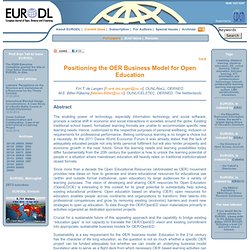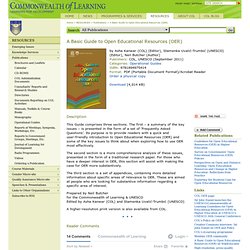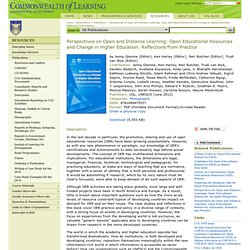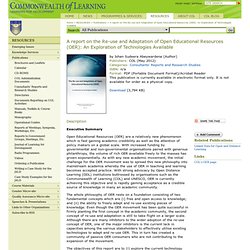

Mooc rival OERu puts accreditation on menu. Coursework to be assessed for academic credit by member institutions A “university” that will allow students to study courses from 31 institutions around the world for free online is to launch this week – and is billed as a more attractive option than massive open online courses.

Students who complete an Open Educational Resources University course will be able to pay a fee to have their work assessed for academic credit, which would then be recognised by all the universities participating in the OERu. In theory, the students could approach any of the partner institutions with evidence of the credits they have amassed and apply for degrees. Once the university assessors are satisfied that the applicants can demonstrate the learning outcomes associated with its programmes, they would become eligible for graduation.
“My faith in education is restored by seeing recognised institutions around the world returning to the core values of education – namely to share knowledge freely,” he said. European Journal of Open, Distance and E-Learning. F.H.T. de Langen [Frank.deLangen@ou.nl], OUNL/NeLL, OERNED, M.E.

Bitter-Rijkema [Marlies.Bitter@ou.nl], OUNL/CELSTEC, OERNED, The Netherlands The enabling power of technology, especially information technology and social software, prompts a radical shift in economic and social interactions in societies around the globe. Existing traditional school based, formalized learning formats are unable to accommodate specific new learning needs.
Hence, customized to the respective purposes of personal wellbeing, inclusion or requirements for professional performance, lifelong continuous learning is no longer a choice but a necessity. At the 2011 Davos World Economic Forum it was already stated that the lack of adequately educated people not only limits personal fulfilment but will also hinder prosperity and economic growth in the near future. Sustainability is a key requirement for the OER business model. In the 21st century continuous education is of vital importance. Figure 1. Figure 2. A Basic Guide to Open Educational Resources (OER) Description This Guide comprises three sections.

The first – a summary of the key issues – is presented in the form of a set of ‘Frequently Asked Questions’. Its purpose is to provide readers with a quick and user-friendly introduction to Open Educational Resources (OER) and some of the key issues to think about when exploring how to use OER most effectively. The second section is a more comprehensive analysis of these issues, presented in the form of a traditional research paper. For those who have a deeper interest in OER, this section will assist with making the case for OER more substantively. The third section is a set of appendices, containing more detailed information about specific areas of relevance to OER. Prepared by Neil Butcherfor the Commonwealth of Learning & UNESCOEdited by Asha Kanwar (COL) and Stamenka Uvalić-Trumbić (UNESCO) A higher-resolution print version is also available from COL. Reader Comments. Perspectives on Open and Distance Learning: Open Educational Resources and Change in Higher Education: Reflections from Practice.
In the last decade in particular, the promotion, sharing and use of open educational resources (OER) have been growing exponentially.

However, as with any new phenomenon or paradigm, our knowledge of OER’s ramifications and achievements to date necessarily lags behind actual developments. The concept of OER has multifaceted dimensions and implications. Open Educational Resources and Higher Education The Economics of Open. The Economics of Open March 4, 2012, 1:00 pm Filed under: Digital Economy, Open Educational Resources (OER) | Tags: advertising, business case, business models, direct and indirect sales, donations, economic driver, economics, innovation, market, memberships, open educational resources, openeducationwk, services, subscriptions.

Learning Through Digital Media. A report on the Re-use and Adaptation of Open Educational Resources (OER): An Exploration of Technologies Available. Description Executive Summary Open Educational Resources (OER) are a relatively new phenomenon which is fast gaining academic credibility as well as the attention of policy makers on a global scale.

With increased funding by governmental and non-governmental organisations paired with generous philanthropy, the volume of rich OER available freely to the masses has grown exponentially. As with any new academic movement, the initial challenge for the OER movement was to spread this new philosophy into mainstream academia whereby the use of OER in teaching and learning becomes accepted practice. With strong advocacy by Open Distance Learning (ODL) institutions buttressed by organisations such as the Commonwealth of Learning (COL) and UNESCO, OER is currently achieving this objective and is rapidly gaining acceptance as a credible source of knowledge in many an academic community. Learning Registry for State Decision Makers and Strategists.pdf.